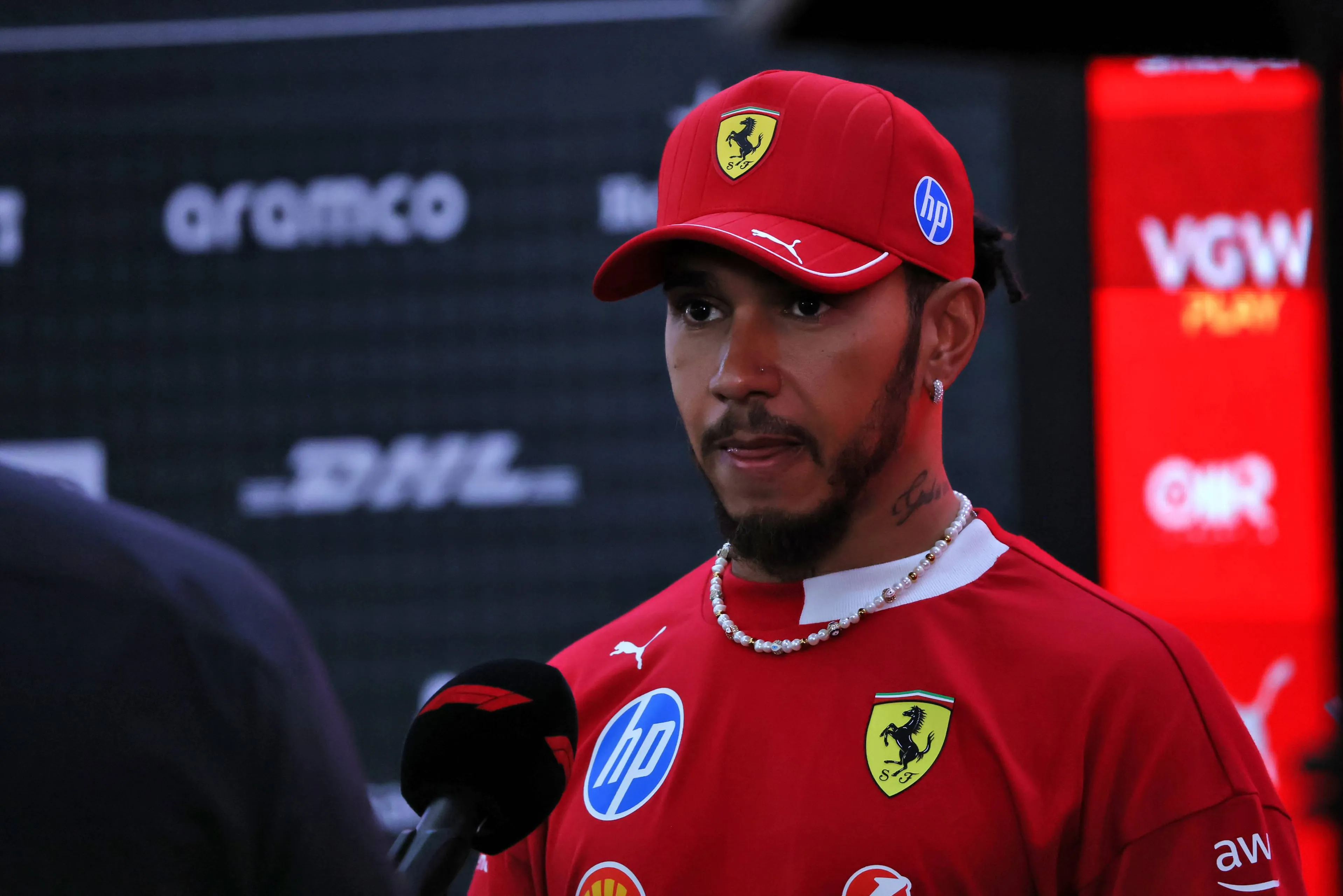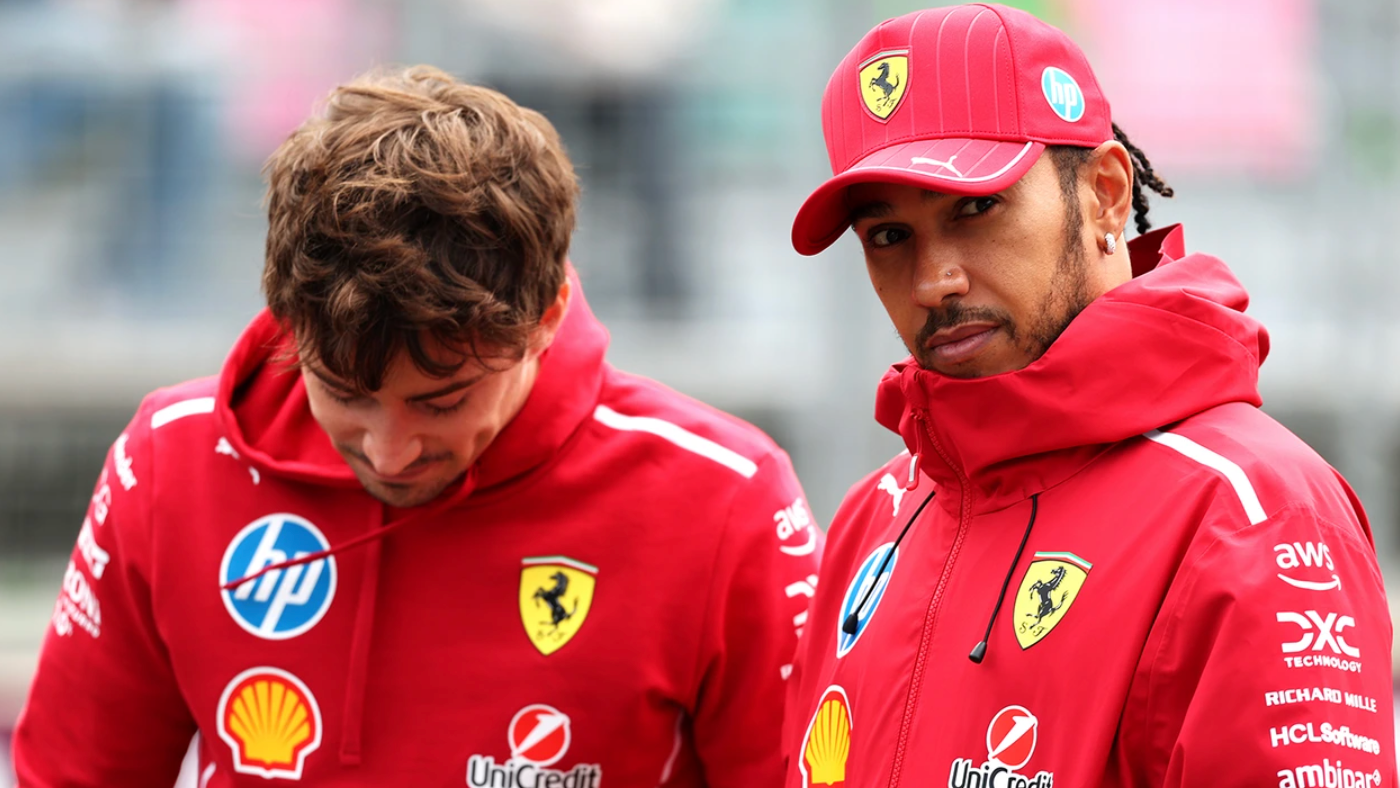The Marina Bay Street Circuit, glittering under the Singapore night, was supposed to be the venue for a Ferrari renaissance. After months of simmering frustration, the team had arrived with genuine reasons for optimism.
Practice sessions showed a car with real pace, capable of challenging the top runners, finally offering the Tifosi a reason to dream of redemption. Instead, the crucial qualifying session delivered not a revival, but a spectacular and humiliating collapse—a crisis so profound it drove two world-class drivers to their breaking points.
Lewis Hamilton openly delivered the most damning indictment possible of the Scuderia’s current state, comparing their errors to the basic operational excellence he once took for granted at Mercedes. Meanwhile, Charles Leclerc, visibly fighting a machine he described as an ‘unpredictable nightmare,’ vented his raw despair with a punch to his own steering wheel.
The recent Singapore Grand Prix will be remembered not as the event Ferrari fought back, but as the moment their championship hopes didn’t just fade, they exploded. The events that unfolded—Hamilton stranded in the pit lane and Leclerc wrestling a sabotaged machine—exposed fundamental flaws in strategy, execution, and engineering that threaten to waste an entire season and fundamentally damage the careers of their two star drivers.

The Damning Comparison: Hamilton Exposes Operational Chaos
Lewis Hamilton’s arrival at Ferrari was heralded as the dawn of a new era, one defined by the ruthless efficiency and strategic genius he had mastered at Brackley. The expectation was that Hamilton would bring a winning mentality; instead, his qualifying experience in Singapore confirmed his worst fears about his new team’s operational capability.
The scenario that unfolded in Q3 was textbook operational failure. Hamilton was released from the garage, but instead of maintaining vital tire temperature, he was left sitting at the end of the pit lane, cars switched off, tires cooling, and precious grip evaporating by the second. On a street circuit like Singapore, where the tire grip window is infinitesimally thin, this lapse was catastrophic. By the time he was finally released, his rhythm was gone, his tires were cold, and his chance to fight for the front row was over. He could only manage a profoundly disappointing sixth place.
His post-session radio message was more than just frustration; it was an act of public accountability. He pointedly stated that at Mercedes, they would never make such a basic error. That comparison was a razor-sharp cut to the core of Ferrari’s identity. It wasn’t about a missing half-a-tenth of car pace; it was about the fundamental, non-negotiable basics of race execution—the very things that define a championship-winning team. Hamilton, the seven-time world champion, was forced to watch his old team, Mercedes, who were expected to struggle on this circuit, execute a perfect session and secure pole position with George Russell. This contrast—operational excellence versus operational chaos—is what truly humiliates the Scuderia. For Hamilton, watching amateur errors destroy his confidence and his lap before it even began, simply felt unacceptable. His patience, a defining trait of his career, is visibly running out. He’s comparing his present situation to a past defined by strategic certainty, and the difference is tearing the relationship apart from the inside.

Leclerc’s Rage: The Setup That Created a Nightmare
If Hamilton’s fury was directed outward at strategy, Charles Leclerc’s was born from a visceral, internal battle with a compromised machine. Leclerc, the loyal cornerstone of the team, endured an event defined by heartbreak. His qualifying ended in seventh place, but the emotional cost was far higher.
The data revealed that Ferrari had the pace to challenge the front runners after an initially promising FP1 session. Yet, after the initially promising FP1 session, a single decision changed everything. Driven by fears of plank wear—a common but manageable issue—Ferrari elected to raise the car’s ride height. This seemingly minor adjustment had devastating consequences. It transformed the SF25 from a balanced, compliant machine into what Leclerc himself was forced to describe as an unpredictable nightmare.
The car’s stability vanished. The rear end became wildly unstable, especially in the crucial third sector where precision is mandatory. Leclerc, a driver whose pace relies heavily on that ‘feeling’ of stability on street circuits, found it gone. He was fighting a car that was nearly impossible to control. Crossing the line, his radio message of “so bad weekend” was followed by a gesture that captured the raw, unadulterated despair of a world-class talent constantly let down by his team: he punched his steering wheel. This physical act of rage was a cry for help, a visible expression of the emotional toll that continuous, systemic failure extracts. It was the crushing weight of a squandered opportunity that broke the surface. Leclerc, whose loyalty to Ferrari has been consistently unwavering, is watching his career capital being depleted by errors that should not exist at this level of motorsport.
The Pace Paradox and the Humiliation of Pole
What makes this disaster so much worse is the cruel irony that the competitive performance was available. The pace was there in the practice sessions; the potential was real. The ensuing collapse was entirely self-inflicted, a fatal combination of poor engineering decisions (the ride height change) and catastrophic execution failure (Hamilton’s cold tires).
The sixth and seventh place grid spots at Marina Bay are more than just disappointing; they are effectively a guarantee of a wasted race day. Overtaking on the narrow, unforgiving streets of Singapore is notoriously difficult. Hamilton and Leclerc are doomed to spend the race staring at exhaust pipes, their talent nullified by garage decisions.
The stark contrast with Mercedes is the most galling aspect for the Tifosi. Mercedes, a team that had lowered expectations for the event due to their car’s traditional struggles with heat and bumps, executed a perfect strategy and setup to put Russell on pole. Their ability to unlock performance and manage the fundamentals highlights Ferrari’s regression. Hamilton’s assessment is brutal but true: if a rival team not expected to shine could secure pole, then Ferrari has no excuses left. This is not about rivals progressing; it’s about Ferrari standing still, or worse, going backwards. The result is a humiliating display of operational ineptitude that overshadows the occasional flashes of raw speed the drivers manage to extract.

The Crisis of Confidence and the Future of Loyalty
Team Principal Fred Vasour’s attempts to rationalize the failures post-qualifying, admitting the team “missed something” and pointing to a failure to benefit from track evolution, rang hollow to those who watched the sequence of errors unfold. Missing track evolution does not explain leaving a driver stranded with cold tires, nor does it justify the lack of contingency planning that followed the disastrous setup change. The excuses are running thin, and the drivers are running out of patience.
This Singapore disaster exposes a pattern that is far more corrosive than a single, isolated mistake. It reveals a fundamental inability to execute basic procedures and a lack of the cohesive decision-making structure required to win championships. Hamilton’s frustration is rooted in seeing the basics—the tire temperature management, the optimal release timing—that Mercedes “always got right” constantly fumbled by Ferrari. For a driver who made a high-stakes, late-career move based on a promise of a new era, this constant delivery of the “same old mistakes in new colors” confirms deep-seated fears about his decision.
For Leclerc, the story is one of loyalty unrewarded. He has shown unwavering commitment consistently, only to have his talent wasted by an organization that seems structurally incapable of supporting a sustained title challenge. The consequences extend far beyond the points lost in Singapore. With each disaster, the whispers about his future grow louder. The ultimate questions now hang heavy over Maranello:
Can Ferrari fundamentally fix their operational problems before the mistakes waste an entire season and the team’s immense talent?
How much longer can Hamilton endure this pattern of amateur errors before his legendary patience finally snaps?
How many more times can Leclerc be betrayed by his team before his loyalty breaks completely?
Singapore was supposed to signal the fight back. Instead, it was the event that exposed a team still trapped by the same old problems. Two star drivers are united in fury, the Tifosi are heartbroken, and rivals are savouring the chaos. The decisions made in the wake of this humiliating defeat will define not just the rest of the season, but the entire future of Ferrari’s championship ambitions. The world is watching to see if the Scuderia can rise above its operational chaos, or if its greatest assets—Hamilton and Leclerc—will be forced to search for excellence elsewhere.